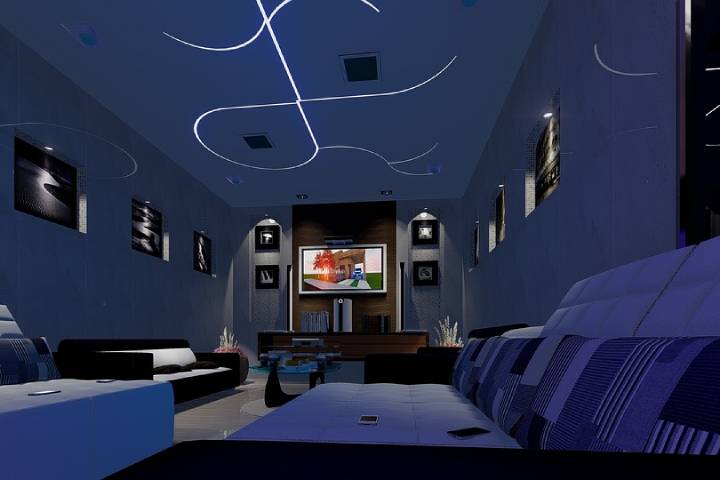Buying a television at present has become a hectic task at hand. There are volumes of technical aspects that we must grasp to understand the workings of the telly we want to buy for our homes. Do we buy OLED or LED-LCD? What is the optimal resolution for your budget?.
While you scroll through endless hours of information to fix the optimal televisores for your home, here we simplify and direct you to the necessary information that might point you in the right direction.
1. Choosing a Display: OLED vs. LED-LCD
For simplifying your choices, we consider LED-LCD and QLED as very similar technologies, as both have LCD panels with a LED backlight lighting your telly. However, QLED uses Quantum Dot Layer, meaning a wide range of colors.
The only important aspect you have to factor in a while choosing the display is dimming zones and shadow details. OLED brings you higher technology by eliminating thick LCD stacks and providing extremely thin OLED stacks. OLED panels are self-emissive and can turn off the pixels creating perfect black spots; this enables the display to produce higher contrast.
Regarding budget, LED-LCD doesn’t break your bank, but even utilizing the latest technology of Full-Array Local Dimming struggles to produce a true black. The light passing through thick LCD panels causes light bleeding around the TV edges. Ultimately, the choice of display depends on your budget and viewing preferences.
2. Resolution
In technical terms, the resolution is the number of pixels composing the image displayed on your television. In a nutshell, people believe more pixels means better image quality, but it’s not the case. A TV with better HDR performance, contrast ratio, and color will have better image quality.
Still, it is an important detail. 4K, Ultra HD, Ultra HD Blu-ray refers to a single resolution of 3,840 X 2,160. When the vertical and horizontal resolution of 4K is doubled, you are at 8K resolution.
The change in resolution from 4K to 8K is not that huge compared to the price jump. You might yet face another obstacle in finding native content for your 8K TV as it is a technology still under development.
3. Pay Attention to Your Refresh Rates
Refresh rates can significantly affect the days you watch sports or when you game with your friends. It is a number usually not presented in marketing yet a key factor in image perception. The refresh rate is how many new images or frames your telly stitches are per second.
Currently, two refresh rates are 60hz and 120hz. 120hz is the better among the two. Fast-moving objects like the football in the goal kicked by your favorite player may become a little less blurry.
Conclusion
Choosing the ideal television for your home ultimately depends on the purpose, viewing habits, and budget. Set your preference and make an informed choice instead of ignoring people’s generic mistakes.
Tech Trends
Related posts
Leave a Reply Cancel reply
Hot Topics
Categories
- Ads (5)
- Animes (25)
- Artificial Intelligence (AI) (35)
- Augmented Reality (AR) (10)
- Automotive (9)
- Bitcoin (16)
- Blockchain (24)
- Business (244)
- Business Intelligence (3)
- Cloud Computing (23)
- Computer (128)
- Concrete Technology (1)
- Cryptocurrency (10)
- Cybersecurity (42)
- Data Science (9)
- Database (4)
- DevOps (6)
- Digital Marketing (76)
- Digital Workplace (14)
- Ecommerce (1)
- Education (28)
- Electric Vehicle (EV) (1)
- Electronics & Hardware (17)
- Entertainment (42)
- Fabrication (3)
- FAQ's (1)
- Finance & Marketing (47)
- Gadgets (35)
- Games (8)
- Gear (29)
- HTTPS (1)
- Industry (46)
- Information Technology (90)
- Internet (413)
- Internet of Things (IoT) (41)
- Job (25)
- Machine Learning (6)
- Marketing (92)
- Mobile Apps (21)
- Movies (11)
- Natural Language Processing (6)
- News & Trends (109)
- Programming (4)
- Science & Technology (235)
- Security (81)
- SEO (56)
- Services (36)
- Social Media (73)
- Software (99)
- Sports (1)
- Technology (306)
- Telecom (6)
- TikTok (5)
- Tours & Travels (9)
- Uncategorized (11)
- Virtual Reality (VR) (7)
- VoIP (4)
- Web Technology (42)
- Workforce (17)
- Workspace (6)



Stay connected